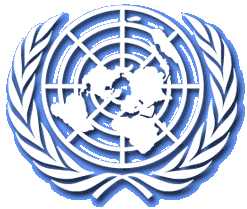Opinion Editorials, February 2008
|
Editorial Note: The following news reports are summaries from original sources. They may also include corrections of Arabic names and political terminology. Comments are in parentheses. |
The Seventh Decade: The New Shape of Nuclear Danger
A Book Written By Jonathan Schell
Reviewed By Jim Miles
ccun.org, February 13, 2008
Metropolitan Books, Henry Holt and Company.
New York, 2007.
Humanity is now living through it seventh decade with the threat of
nuclear annihilation even more powerful than ever. In this
wonderfully written work, Jonathan Schell reviews the history of the
doomsday weapons that have affected all our lives to a significant
degree whether we realize it or not. The Seventh Decade is not
about the physical development of the bomb, nor a graphic description of
its destructive power, nor does it detail the technological wonders of
the bomb. More significantly – and except for Hiroshima and
Nagasaki – it is about the psychological turn of events surrounding a
doomsday weapon, a device used only twice in a debut that in itself was
as much psychological as military.
This is one of those rare well-written works that clearly defines it
purpose, explains itself in language that is readily understood, and
draws the reader steadily into its position. It is an insightful
work, analysing the nuclear problem in a global sense, as one feature of
an over-arching global problem of how humanity gets along with itself.
All the author’s ideas have a clear exposition and a clear analysis of
what is for the most part “abstraction and euphemism.” It is
one of those situations where the answer is really quite simple; it is
the route to the solution of the problem that remains difficult, bound
up in human psychology, the psychology of terror, deterrence, and
non-proliferation.
The first part of the book “The Bomb in the Mind”, discusses the
development of the bomb, an inevitable deed once it was conceived under
highly militarized circumstances. Shortly after the Hiroshima
debut, a very brief moment of one unique power gave way to a ‘cold war’
with each side threatening yet with-holding nuclear use, ultimately
relying on the ‘mutually assured destruction’ – the probable extinction
of the human species. With the end of the cold war, little changed
until the events of 9/11 provided the rationale for a new more dangerous
approach to nuclear weapons.
Suddenly proliferation and terrorism became the new catch-words, with a
single super power using ‘full spectrum dominance’, applying force
unilaterally to solve these new problems. In Schell’s argument,
most “Recent studies…seem to share the assumption that the nuclear
danger consists wholly of the acquisition of nuclear arms by new
parties” with few addressing “the problem of existing arsenals.”
This double standard – we can have them, you cannot – leads to his
thesis “that proliferation and possession cannot be considered in
isolation from each other; that a solution to the former requires
dealing with the latter; and this can only mean a commitment to the
elimination of all nuclear arms.” His purpose is to examine the
nuclear dilemma, fully aware that there is “a lack of experience” – that
is, no war between two nuclear powers – and therefore all estimates and
theories have wide margins of error.
From that very powerful and fully global perspective, Schell then
examines the human thought patterns, the psychology, of how the bomb
developed as an over-riding global concern.
It began with knowledge – how to make the weapon. From that
knowledge “It is the bomb in the mind, more durable than any material
object, that stands at the heart of the nuclear dilemma, holding our age
in thrall with its terror and allure.” The bomb’s initial
use added to that knowledge and added to the psychological knowledge,
the fear, terror and power that it imparted to the possessor. This
psychology of the bomb, “tightly linked to the science that made it
possible” is a “central characteristic of the nuclear dilemma.”
Very early on, proliferation and deterrence were central arguments for
nuclear weapons, “two sides of the same coin.”
Justification for the bomb has its realist and romantic conceptions.
Schell’s discussion passes through Pakistan and A. Q. Khan’s network
consisting “of a global network of scientists, businessmen,
corporations, intelligence and military services, and states” provided
by “the all pervading circulation of goods and services by the market
system in our globalized economy.” The ideas then move into India
where the 1998 test “seemed less interested in delivering a message to
their enemies [realists]…than in delivering one to themselves
[romantic].” Even with that, Schell recognizes that romantic pride
carries the other message that nuclear weapons “are first and foremost
instruments of foreign policy.”
The discussion flows through France, Great Britain, and Russia, ending
up in Israel, where the true psychological nature of the weapon is in
full force. Officially, Israel does not have nuclear weapons.
While its “arsenal is an open secret” its plans remain a closed secret.”
While it may seem “the height of absurdity” to not acknowledge the bomb,
that only emphasizes “appearances and psychology have been trumping
realities…for more than half a century.”
From there develops the idea of “nuclear Wilsonians”, the achievement of
peace based on nuclear terror (which is arguably more absurd than Israel
not officially recognizing its arsenal). While the romantics
“dreamed of global stature” the “Wilsonians dreamed of nuclear peace.”
From this came the policy of deterrence, and through that a convergence
for a “new global order” in which the “psychological field of action at
the center of all nuclear strategy” converged, with “the realist’s fear,
the romantic’s ambition for greatness, and the Wilsonians’ yearning for
peace flowed together.”
Away from these “self appointed guardians”, however, nuclear weapons
“remained what they had always been “a hideous, limitless threat
posed by the most deadly devices ever invented.” Thus there
developed ‘rogue’ states, the double standard as to who could possess
the weapon and who could not. It was the United States that set
the definitions to this question.
The second part of the book examines “The Empire and the Bomb:
Rise and Fall of the Bush Doctrine.” Its first chapter examines
the “Rise of the Imperial Idea” in nuclear terms, showing the shift away
from deterrence vis a vis Russia and non-proliferation to the
non-nuclear club to the American policy of “Global Strike”. This
policy is not one that is publicly debated (Schell earlier noted that no
nation in history has ever decided through a democratic process to build
the bomb) and speaks euphemistically, speaking of “adversaries” and
“aggressors” and “terrorists” that need “dissuading.” The Global
Strike policy developed from the Nuclear Policy Review assisted by the
Global War on Terror, both providing “the framework in which virtually
all security issues are now being analyzed.”
There is the well-known theme of denial of international law, with the
arch-evil John Bolton arguing that international treaties are
“historical”, their obligations comprising “issues that do not exist.”
By adopting the value of unilateral force, U.S. foreign policy has “a
free hand, unconstrained by alliances or treaty obligations.”
The American empire’s foreign policy is now based on the policy of using
global pre-emptive, first strike missions.
That it is a failure Schell explains in “A Nuclear Renaissance”,
claiming, “the Bush administration’s nuclear policies…have failed, in
their own terms as well as absolutely.” But that failure has not
brought the world a reprieve, only more nuclear terror. Instead of
one country dominating the globe and actually achieving the oxymoronic
nuclear peace, “the bomb is more deeply and more complacently accepted
as a normal component of military establishments in more parts of the
world than ever before.”
With the new double standard, and the failure of the Bush policy in
relation to Iraq, where no nuclear facilities or capabilities were
found, and where a fully armed nuclear country finds those weapons
useless against a counter-insurgency (as with Russia in Afghanistan, the
U.S. in Vietnam, China in Vietnam), Schell journeys on through South
Korea, Taiwan, Japan, Brazil and Argentina, and then back to China and
Russia, all nuclear capable countries, with passing mention given to
Saudi Arabia, Egypt,, Turkey and, again, back to Iraq (with “some fifty
nations…now capable of building the bomb if they so choose”.).
Iran clearly highlights the double standard. Intransigent in
their insistence on the NPT articles that allow it to enrich uranium,
the U.S. seems equally intransigent on imposing its double standard “to
be enforced, when necessary by war, including nuclear war.” The
U.S. is giving the world a total irony – we are going to use nuclear
weapons to prevent the use of nuclear weapons.
The ‘war on terror’ only muddies the picture as ”terror has always been
the coinage of the nuclear realm…and no one should have been surprised
that terrorists would seek out this supreme instrument of torture.”
That would seem obvious, and the solution, that “a global effort
to secure and reduce fissile material” would be better than a
“full-scale militarized war on terror,” should also be obvious.
Schell questions whether non-proliferation is the essential element of
the Bush doctrine, and his suspicions lead to global empire, a “global
behemoth, throwing off its chains at last, striding out into a world it
means to dominate.” The 9-11 attacks, couched in terms of a
“tragedy that has befallen the United States,” is also “an opportunity
to unleash the immense coiled power of the Untied States to remake the
world in its own image.” Very briefly Schell recognizes that
throughout American history “episodes of pre-emptive attack, overthrow
of regimes, and pursuit of dominance are common.”
The final section of the book looks at ways to respond to the current
problem, and requires a significant paradigm shift away from the double
standard. The answer, “founded on the principles of law and
consent…can only be one thing: the elimination of nuclear weapons by
global agreement.” This sets up a single standard,
that no nation shall possess any nuclear weapons. Simple answer,
difficult journey.
Ronald Reagan and Mikhail Gorbachev came the closest to this ideal in
the 1980s, only to be hung up on the American insistence on the
Strategic Defence Initiative (SDI or Star Wars), a distressing fact as
“SDI was a delusion for the foreseeable future” (and except for a few
rigged solitary test situations, still is). The SDI also
emphasizes “the primarily psychological character of nuclear
transactions”, a “technical fantasy…at the center of the most important
strategic decisions in the last years of the Cold War.”
The lessons of these nuclear failures – the failure of the
Reagan-Gorbachev abolition, the failure of Bush’s “strategic school of
nuclear warfighters” – confirms a “central axiom of life in the nuclear
age”, that there is no true advantage to them and “they are inescapably
a common danger than can only be faced by all together.” Yet the
nuclear momentum continues to build, in face of only the “perceived”
difficulty in getting rid of them, with the result that for each passing
year, “nuclear weapons provide their possessor with less safety while
provoking more danger.”
Schell concludes with several broad principles that could guide the
world to nuclear free territory, starting with the adoption of the idea
that the “abolition of nuclear arms [serve] as the organizing principle
and goal of all activity in the nuclear field.” Above all else he
sees global nuclear abolition as an opportunity to also address “larger
planetary crisis” such as chemical and biological weapons, the
inequitable global market economy (largely funded and supported by U.S.
corporate militarism), natural or engineered pandemics, and global
warming, the latter he considers the “most difficult item on the broader
agenda.”
Seldom do writers see, understand, and express such a comprehensive
global vision in such readily understood terms. Schell offers that
global scope, and offers what should be seen as common sense solutions.
The human environment – the environment period – is endangered by most
human activities in the pursuit of global power, control, and wealth.
Coming to terms with the scary psychology of the nuclear dilemma is a
good place to start. Overcoming the psychological constructs built
around the need for possessing a doomsday weapon will allow the people
of the world to make much more significant progress with the other
dilemmas that threaten their survival.
Jim Miles is a Canadian educator and a regular
contributor/columnist of opinion pieces and book reviews for The
Palestine Chronicle. His interest in this topic stems originally
from an environmental perspective, which encompasses the militarization
and economic subjugation of the global community and its commodification
by corporate governance and by the American government. Miles’
work is also presented globally through other alternative websites and
news publications.
Fair Use Notice
This site contains copyrighted material the use of which has not always been specifically authorized by the copyright owner. We are making such material available in our efforts to advance understanding of environmental, political, human rights, economic, democracy, scientific, and social justice issues, etc. We believe this constitutes a 'fair use' of any such copyrighted material as provided for in section 107 of the US Copyright Law. In accordance with Title 17 U.S.C. Section 107, the material on this site is distributed without profit to those who have expressed a prior interest in receiving the included information for research and educational purposes. For more information go to: http://www.law.cornell.edu/uscode/17/107.shtml. If you wish to use copyrighted material from this site for purposes of your own that go beyond 'fair use', you must obtain permission from the copyright owner.
|
|
|
|
||
|
||||||


